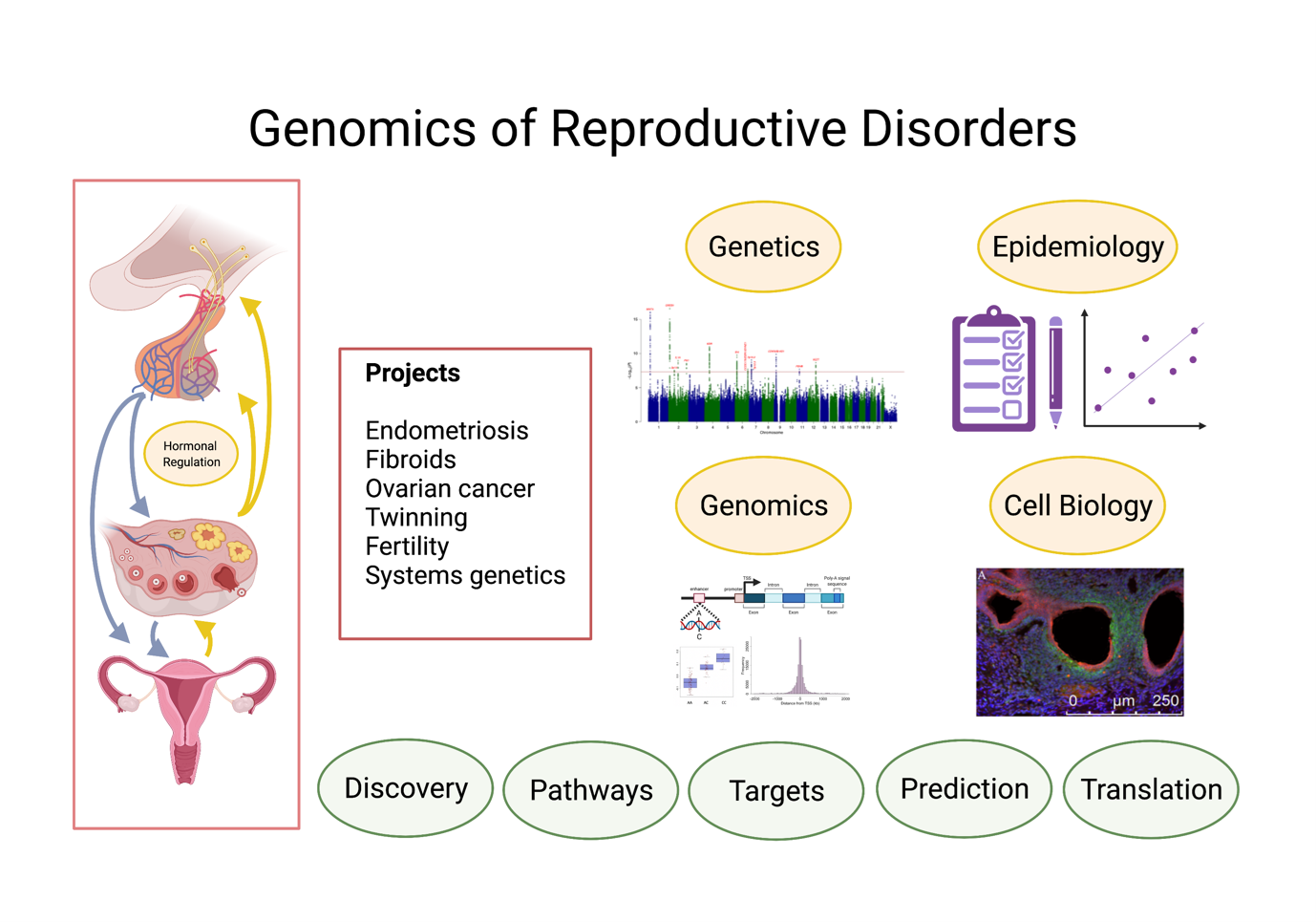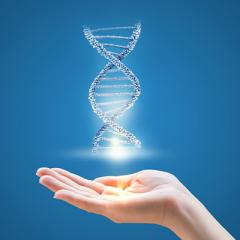Identifying risk factors for reproductive disorders
Genetic factors contribute to risk for many common diseases including reproductive disorders.
Professor Montgomery is leading a team of scientists using genetics and genomics to find factors explaining variation in reproductive traits and increasing risk for reproductive diseases.
One of these disorders is endometriosis where tissue similar to the normal uterine lining grows and invades areas around the pelvis. It creates scar tissue that impedes the function of the organs by reducing their mobility. It causes serious pain and in many cases, infertility.
Group leader

Professor Grant Montgomery
Group Leader, Genomics of reproductive disorders
Director, UQ Genome Innovation Hub
+61 7 3346 2612
g.montgomery1@uq.edu.au UQ Genome Innovation Hub
Our group studies the role of genetic and environmental factors and their contribution to reproductive disorders to understand disease biology and translate knowledge gained for better clinical outcomes. We study disease populations using genetics and use advanced genomics methods in tissue samples and cell-based models, to discover the changes in cellular functions leading to disease. A major focus of our research is studies on endometriosis and related disorders.
Endometriosis
Endometriosis is a common chronic debilitating disease that affects the health and well-being of 11% of women of reproductive age in Australia. Diagnosis and treatment are a major clinical challenge because patients present with variable symptoms including severe pelvic pain and symptoms overlap with other conditions. A hallmark of endometriosis is the marked heterogeneity and poor correlation between symptoms and clinical observations. The direct and indirect costs for endometriosis in Australia are considerable; estimated at $7.4 billion to $9.7 billion every year. Causes of endometriosis are still poorly understood.
“We know multiple genetic variants and environmental risk factors contribute incrementally to increasing risk,” Professor Montgomery said.
Genetic Studies
Professor Montgomery’s research team analyses genetic markers from across the genome to determine the genetic factors associated with risk.
We work with colleagues around the world to map the genomic regions contributing to endometriosis risk. Our recent studies, in collaboration with 10 international groups, identified 14 genomic regions associated with endometriosis. We are participating in the next generation of genome-wide association studies and the analysis of overlap with other diseases, including migraine, ovarian cancer, and endometrial cancer.
Regulation of gene expression in endometrium
Expression of many genes is under genetic control and many genetic factors contributing to common disease are located in regulatory regions of the genome affecting gene expression. Our research aims to better understand the genetic and epigenetic regulation of gene expression especially in the endometrium. This is an important tissue, essential for establishment and maintenance of pregnancy.
Expression of many genes in endometrium show dynamic changes across the menstrual cycle. Following analyses of gene expression and RNA sequencing studies in endometrium we have identified genetic control of expression and associations with reproductive traits and disorders.
We continue to explore cell-type specific regulation using the latest RNA-sequencing and single-cell sequencing technologies to identify cell-type specific genetic contributions to the pathogenesis of reproductive disorders.
Epigenetic studies
We contribute to a major international consortium studying epigenetic control of gene expression in endometrium and are part of the analysis team conducting joint analysis of DNA methylation data and integration with genetic and gene expression data from the same samples and with our genome-wide association results.
Functional studies in endometriosis
To identify the specific genes and pathways responsible for imitation and progression of endometriosis we search through the genomic risk regions to identify specific genes that are affected and how altered regulation of these genes in relevant cell types can increase disease risk.
We use systems genomics and analysis of multiple genomics datasets, including our own gene expression and epigenetic date sets for endometrium, to search through genomic risk regions to identify the target genes and effects of different genetic backgrounds. The research applies recent advances in genomics, statistics, and computing to better understand the different molecular mechanisms by which genetic markers influence disease risk and development.
We conduct functional studies in endometrium, in isolated primary cells derived directly from patients, and in organoid and complex 3D in vitro models to identify the critical genes and functional consequences of the known genetic factors increasing endometriosis risk. This includes genetic effects on gene expression and alternative splicing in regions associated with the disease, studies of chromatin looping between causal variants and gene promoters.
Cell biology studies
Endometriosis is characterised by the growth of endometrial epithelial and stromal cells outside the uterus, but with contributions from multiple cell types within a unique microenvironment during lesion initiation and growth. We are looking to tease apart this complex disease by focussing on the contribution of the individual cells.
We have generated over 100 primary endometrial stromal cells isolated from different patients with gene expression and genotyping data for more than half of these cell lines. We have also generated over 20 primary, conditionally reprogrammed epithelial cells and 20 individual endometrial organoid models with accompanying genome-wide genotype and gene expression data.
We are studying how genetic variants influence the behaviour of individual cell lines and the interaction with other cells within the microenvironment. This is being studied by recapitulating endometriotic environments with multi-cellular in vitro models generated from patient tissue. We use complex 3D dimensional coculturing techniques that include combinations of organoids, stromal cells and endothelial cells.
Data Tools and In vitro models
We have developed ShinyApps, light-weight software tools, for searching datasets generated by our group. This includes data on the genetic regulation of gene expression (expression quantitative trait loci; eQTLs) and methylation (methylation quantitative trait loci; mQTLs) in human endometrium and blood. The apps were written by Dr Samuel Lukowski.
The Endo eQTL RNAseq browser is a database of eQTL results from an endometrial RNA-sequencing dataset on 206 women.
The Endometrial tissue eQTL browser v2 is a database of eQTL results from an endometrial gene expression array dataset on 229 women. See published research for further details.
The endometrial mQTL browser is a database of mQTL results from an endometrial DNA methylation dataset on 66 women. The blood mQTL browser is a database of mQTL results from a blood DNA methylation dataset on the same 66 women. See published research for further details.
Research title: Genomics of reproductive disorders
Summary of research interests: We use genetic approaches to discover critical genes and pathways increasing risk for complex diseases. Follow-up genomic studies aim to understand how these genetic differences regulate gene expression and epigenetics to alter disease risk. A major focus is women’s health and the pathogenesis of endometriosis. We have identified genomic regions strongly associated with increased endometriosis risk and are analyzing gene expression and methylation patterns in the endometrium to understand how these genetic variants contribute to increased disease risk. Endometriosis is associated with other reproductive traits and diseases including ovarian cancer and we also study the mechanisms of shared genetic risk.
Traineeships, Honours and PhD projects include
- Analysis of gene expression in the human endometrium and endometrial cell types
- Analysis of genomic regions associated with endometriosis risk and other diseases
- Genetic control of methylation patterns in the endometrium and other tissues.
- Multi-omic data integration to identify target genes and pathways for reproductive disorders.
Contact: Professor Grant Montgomery
+61 7 3346 2054
g.montgomery@imb.uq.edu.au
Reviews and Commentaries
Genetic Regulation of Transcription in the Endometrium in Health and Disease.
Mortlock S, McKinnon B, Montgomery GW. Frontiers in Reproductive Health. 2022;3(107).
Genetic Regulation of Physiological Reproductive Lifespan and Female Fertility
McGrath IM, Mortlock S, Montgomery GW (2021).
Int J Mol Sci 22, 2556.
Cellular Origins of Endometriosis: Towards Novel Diagnostics and Therapeutics Filby CE, Rombauts L, Montgomery GW, Giudice LC, Gargett CE (2020).
Semin Reprod Med 38, 201-15.
Should Genetics Now Be Considered the Pre-eminent Etiologic Factor in Endometriosis?
Montgomery, G.W., Mortlock, S. and Giudice, L.C. (2019)
J Minim Invasive Gynecol.
The role of the endocannabinoid system in aetiopathogenesis of endometriosis: A potential therapeutic target.
Tanaka, K., Mayne, L., Khalil, A., Baartz, D., Eriksson, L., Mortlock, S.A., Montgomery, G., McKinnon, B. and Amoako, A.A. (2019)
European Journal of Obstetrics Gynecology and Reproductive Biology 244: 87-94.
Progesterone Resistance in Endometriosis: an Acquired Property?
McKinnon, B., Mueller, M. and Montgomery, G. (2018)
Trends in Endocrinology and Metabolism 29: 535-548.
Complex genetics of female fertility.
Gajbhiye, R., Fung, J.N. and Montgomery, G.W. (2018)
NPJ Genomic Medicine 3: 29.
New Lessons about Endometriosis - Somatic Mutations and Disease Heterogeneity.
Montgomery, G.W. and Giudice, L.C. (2017) New Eng. J. Med. 376: 1881-1882.
Endometriosis
Genetic analysis of endometriosis and depression identifies shared loci and implicates causal links with gastric mucosa abnormality.
Adewuyi EO, Mehta D, Sapkota Y, International Endogene C, andMe Research T, Auta A, Yoshihara K, Nyegaard M, Griffiths LR, Montgomery GW et al. (2021)
Human genetics 140, 529-52.
Genetic risk factors for endometriosis near estrogen receptor 1 and coexpression of genes in this region in endometrium.
Marla S, Mortlock S, Houshdaran S, Fung J, McKinnon B, Holdsworth-Carson SJ, Girling JE, Rogers PAW, Giudice LC, Montgomery GW (2021)
Molecular human reproduction 27, (in press).
Prevalence and incidence of endometriosis in Australian women: a data linkage cohort study. Rowlands IJ, Abbott JA, Montgomery GW, Hockey R, Rogers P, Mishra GD (2021)
BJOG 128, 657-65.
Tissue specific regulation of transcription in endometrium and association with disease.
Mortlock, S., Kendarsari, R.I., Fung, J.N., Gibson, G., Yang, F., Restuadi, R., Girling, J.E., Holdsworth-Carson, S.J., Teh, W.T., Lukowski, S.W., Healey, M., Qi, T., Rogers, P.A.W., Yang, J., McKinnon, B. and Montgomery, G.W. (2020)
Hum Reprod: (in press).
Genetic regulation of methylation in human endometrium and blood and gene targets for reproductive diseases.
Mortlock, S., Restuadi, R., Levien, R., Girling, J.E., Holdsworth-Carson, S.J., Healey, M., Zhu, Z., Qi, T., Wu, Y., Lukowski, S.W., Rogers, P.A.W., Yang, J., McRae, A.F., Fung, J.N. and Montgomery, G.W. (2019)
Clinical Epigenetics 11: 49.
Meta-analysis identifies five novel loci associated with endometriosis highlighting key genes involved in hormone metabolism
Sapkota, Y., Steinthorsdottir, V., Morris, A.P., Fassbender, A., Rahmioglu, N., De Vivo, I., Buring, J.E., Zhang, F., Edwards, T.L., Jones, S., O, D., Peterse, D., Rexrode, K.M., Ridker, P.M., Schork, A.J., MacGregor, S., Martin, N.G., Becker, C.M., Adachi, S., Yoshihara, K., Enomoto, T., Takahashi, A., Kamatani, Y., Matsuda, K., Kubo, M., Thorleifsson, G., Geirsson, R.T., Thorsteinsdottir, U., Wallace, L.M., i, P.-S.S.I.B.G., Yang, J., Velez Edwards, D.R., Nyegaard, M., Low, S.K., Zondervan, K.T., Missmer, S.A., D'Hooghe, T., Montgomery, G.W., Chasman, D.I., Stefansson, K., Tung, J.Y. and Nyholt, D.R. (2017)
Nature Communications 8 (1) 15539
Endometriosis risk alleles at 1p36.12 act through inverse regulation of CDC42 and LINC00339.
Powell, J.E., Fung, J.N., Shakhbazov, K., Sapkota, Y., Cloonan, N., Hemani, G., Hillman, K.M., Kaufmann, S., Luong, H.T., Bowdler, L., Painter, J.N., Holdsworth-Carson, S.J., Visscher, P.M., Dinger, M.E., Healey, M., Nyholt, D.R., French, J.D., Edwards, S.L., Rogers, P.A. and Montgomery, G.W. (2016)
Hum Mol Genet 25: 5046-5058.
Genome-wide association meta-analysis identifies new endometriosis risk loci.
Nyholt, D.R., Low, S.K., Anderson, C.A., Painter, J.N., Uno, S., Morris, A.P., Macgregor, S., Gordon, S.D., Henders, A.K., Martin, N.G., Attia, J., Holliday, E.G., McEvoy, M., Scott, R.J., Kennedy, S.H., Treloar, S.A., Missmer, S.A., Adachi, S., Tanaka, K., Nakamura, Y., Zondervan, K.T., Zembutsu, H. and Montgomery, G.W. (2012).
Nature Genetics 44: 1355-1359.
Genome-wide association study identifies a locus at 7p15.2 associated with endometriosis.
Painter, J.N., Anderson, C.A., Nyholt, D.R., Macgregor, S., Lin, J., Lee, S.H., Lambert, A., Zhao, Z.Z., Roseman, F., Guo, Q., Gordon, S.D., Wallace, L., Henders, A.K., Visscher, P.M., Kraft, P., Martin, N.G., Morris, A.P., Treloar, S.A., Kennedy, S.H., Missmer, S.A., Montgomery, G.W. and Zondervan, K.T. (2011)
Nature Genetics 43: 51-54.
Reproductive Traits and Diseases
Genetic analyses of gynecological disease identify genetic relationships between uterine fibroids and endometrial cancer, and a novel endometrial cancer genetic risk region at the WNT4 1p36.12 locus.
Kho PF, Mortlock S, Amant F, Annibali D, Ashton K, Attia J, et al. Human Genetics. 2021;140(9):1353-65.
Genome-wide association and epidemiological analyses reveal common genetic origins between uterine leiomyomata and endometriosis.
Gallagher CS, Mäkinen N, Harris HR, Rahmioglu N, Uimari O, Cook JP, et al. Nature Communications. 2019;10(1):4857.
Molecular Support for Heterogonesis Resulting in Sesquizygotic Twinning.
Gabbett, M.T., Laporte, J., Sekar, R., Nandini, A., McGrath, P., Sapkota, Y., Jiang, P., Zhang, H., Burgess, T., Montgomery, G.W., Chiu, R. and Fisk, N.M. (2019)
New Eng. J. Med. 380: 842-849.
Identification of nine new susceptibility loci for endometrial cancer.
O'Mara, T.A., Glubb, D.M., Amant, F., Annibali, D., Ashton, K., Attia, J., et al., (2018)
Nat Commun 9: 3166.
Identification of Common Genetic Variants Influencing Spontaneous Dizygotic Twinning and Female Fertility.
Mbarek, H., Steinberg, S., Nyholt, D.R., Gordon, S.D., Miller, M.B., McRae, A.F., Hottenga, J.J., Day, F.R., Willemsen, G., de Geus, E.J., Davies, G.E., Martin, H.C., Penninx, B.W., Jansen, R., McAloney, K., Vink, J.M., Kaprio, J., Plomin, R., Spector, T.D., Magnusson, P.K., Reversade, B., Harris, R.A., Aagaard, K., Kristjansson, R.P., Olafsson, I., Eyjolfsson, G.I., Sigurdardottir, O., Iacono, W.G., Lambalk, C.B., Montgomery, G.W., McGue, M., Ong, K.K., Perry, J.R., Martin, N.G., Stefansson, H., Stefansson, K. and Boomsma, D.I. (2016)
Am J Hun Genet 98: 898-908.
Parent-of-origin-specific allelic associations among 106 genomic loci for age at menarche.
Perry, J.R., Day, F., Elks, C.E., Sulem, P., Thompson, D.J., Ferreira, T., et al., (2014)
Nature 514 (7520) 92-97.
Systems Genetics
Genotype-free demultiplexing of pooled single-cell
Xu, J., Falconer, C., Nguyen, Q., Crawford, J., McKinnon, B.D., Mortlock, S., Senabouth, A., Andersen, S., Chiu, H.S., Jiang, L., Palpant, N.J., Yang, J., Mueller, M.D., Hewitt, A.W., Pébay, A., Montgomery, G.W., Powell, J.E. and Coin, L.J.M. (2019)
RNA-seq. Genome Biol 2: 290.
Comprehensive Multiple eQTL Detection and Its Application to GWAS Interpretation.
Zeng, B., Lloyd-Jones, L.R., Montgomery, G.W., Metspalu, A., Esko, T., Franke, L., Vosa, U., Claringbould, A., Brigham, K.L., Quyyumi, A.A., Idaghdour, Y., Yang, J., Visscher, P.M., Powell, J.E. and Gibson, G. (2019)
Genetics vol. 212 no. 3, 905-918
Identification of 55,000 Replicated DNA Methylation
McRae, A.F., Marioni, R.E., Shah, S., Yang, J., Powell, J.E., Harris, S.E., Gibson, J., Henders, A.K., Bowdler, L., Painter, J.N., Murphy, L., Martin, N.G., Starr, J.M., Wray, N.R., Deary, I.J., Visscher, P.M. and Montgomery, G.W. (2018)
QTL. 8: 17605.
Integrative analysis of omics summary data reveals putative mechanisms underlying complex traits.
Wu, Y., Zeng, J., Zhang, F., Zhu, Z., Qi, T., Zheng, Z., Lloyd-Jones, L.R., Marioni, R.E., Martin, N.G., Montgomery, G.W., Deary, I.J., Wray, N.R., Visscher, P.M., McRae, A.F. and Yang, J. (2018)
Nat Commun 9: 918.
Integration of summary data from GWAS and eQTL studies predicts complex trait gene targets.
Zhu, Z., Zhang, F., Hu, H., Bakshi, A., Robinson, M.R., Powell, J.E., Montgomery, G.W., Goddard, M.E., Wray, N.R., Visscher, P.M. and Yang, J. (2016)
Nature Genetics 48: 481-487.
Improving Phenotypic Prediction by Combining Genetic and Epigenetic Associations.
Shah, S., Bonder, M.J., Marioni, R.E., Zhu, Z., McRae, A.F., Zhernakova, A., Harris, S.E., Liewald, D., Henders, A.K., Mendelson, M.M., Liu, C., Joehanes, R., Liang, L., Consortium, B., Levy, D., Martin, N.G., Starr, J.M., Wijmenga, C., Wray, N.R., Yang, J., Montgomery, G.W., Franke, L., Deary, I.J. and Visscher, P.M. (2015)
Am J Hun Genet 97: 75-85.
Contribution of genetic variation to transgenerational inheritance of DNA methylation.
McRae, A.F., Powell, J.E., Henders, A.K., Bowdler, L., Hemani, G., Shah, S., Painter, J.N., Martin, N.G., Visscher, P.M. and Montgomery, G.W. (2014)
Genome Biol 15: R73.
Systematic identification of trans eQTLs as putative drivers of known disease associations.
Westra, H.J., Peters, M.J., Esko, T., Yaghootkar, H., Schurmann, C., Kettunen, J., Christiansen, M.W., Fairfax, B.P., Schramm, K., Powell, J.E., Zhernakova, A., Zhernakova, D.V., Veldink, J.H., Van den Berg, L.H., Karjalainen, J., Withoff, S., Uitterlinden, A.G., Hofman, A., Rivadeneira, F., t Hoen, P.A., Reinmaa, E., Fischer, K., Nelis, M., Milani, L., Melzer, D., Ferrucci, L., Singleton, A.B., Hernandez, D.G., Nalls, M.A., Homuth, G., Nauck, M., Radke, D., Volker, U., Perola, M., Salomaa, V., Brody, J., Suchy-Dicey, A., Gharib, S.A., Enquobahrie, D.A., Lumley, T., Montgomery, G.W., Makino, S., Prokisch, H., Herder, C., Roden, M., Grallert, H., Meitinger, T., Strauch, K., Li, Y., Jansen, R.C., Visscher, P.M., Knight, J.C., Psaty, B.M., Ripatti, S., Teumer, A., Frayling, T.M., Metspalu, A., van Meurs, J.B. and Franke, L. (2013)
Nature Genetics 45: 1238-1243.
Professor Montgomery has made substantial contributions to the worldwide effort to map genomic regions contributing to risk for complex traits and diseases, including endometriosis, age at menarche and menopause, cancers of the reproductive tract, melanoma and inflammatory bowel disease. He is conducting systems genetics and functional studies to identify the genes and pathways affected by these genetic risk factors.
- Dr Akwasi Amoako and Dr Keisuke Tanaka, Department of Gynaecology, Royal Brisbane and Women’s Hospital, Brisbane Australia
- Professor Gita Mishra, School of Public Health, The University of Queensland, QLD, Australia
- Dr Anna Lagendijk, Cell and Developmental Biology, Institute for Molecular Bioscience, Brisbane, Australia
- Professor Caroline Gargett, The Ritchie Centre, Hudson Institute of Medical Research, Monash University, Melbourne, VIC, Australia.
- Professor Jason Abbott, School of Women's and Children's Health, University of New South Wales, NSW, Australia.
- Professor Nick Martin, QIMR Berghofer Medical Research Institute, QLD, Australia
- Professor Linda Giudice, Department of Obstetrics, Gynecology and Reproductive Sciences, University of California, San Francisco, San Francisco, California, USA
- Professor Krina Zondervan, Oxford Endometriosis CaRe Centre, Nuffield Department of Women's & Reproductive Health, University of Oxford, Women's Centre, John Radcliffe Hospital, Oxford OX3 9DU, UK
- Dr Rahul Gajbhiye, Clinical Research Laboratory, ICMR-National Institute for Research in Reproductive Health, Mumbai, Maharashtra, India
- Prof Michael Mueller, Department of Gynaecology Inselspital Hospital, University of Bern, Department of Biomedical Research, Bern, Switzerland
- Prof Matti Poutenin and Dr Taija Heinosaol, Department of Physiology, University of Turku, Turku Finland
- QENDO (Endometriosis Association Qld Inc.)
- International Endometriosis Genetics Consortium
- Consortium on Epigenetic Control of Gene Expression on Endometrium
- ReproGen Consortium, an international network of investigators interested in better understanding the genetic basis of reproductive ageing
News
-
-
The invisible struggle: Laura’s endometriosis story
20 March 2023
General enquiries
+61 7 3346 2222
imb@imb.uq.edu.au
Media enquiries
IMB fully supports UQ's Reconciliation Action Plan and is implementing actions within our institute.
Support us
Donate to research
100% of donations go to the cause












